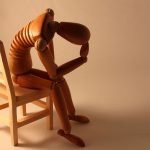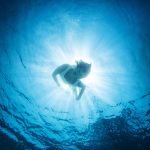Helen Wilmans & Mental Culture
Sussanna Czeranko, ND, BBE
Nature Cure Clinical Pearls
Thought is the healer. Thought educated in the knowledge of that universal truth―all is good, or all if Life―becomes a power not to be resisted by the negative thought of the negative individual. –Helen Wilmans, 1918, p.476
It is our mission to strengthen ourselves daily by as much truth as we can recognize and appropriate. Swell upon the idea that the good is life, truth, love, intelligence, substance all-knowing, all-powerful, all-present―and that we, being in it and of it, possess life everlasting, glorious love and mighty power; that like can only create like, and that Life, being good, can only externalize good. –Helen Wilmans, 1918, p.670
Our very best and truest and noblest thought is worthless unless it is led forth into activities. –Helen Wilmans, 1919, p.607
Mental Culture in Naturopathic Medicine, the ninth book in The Hevert Collection, just crossed the finished line. Within its covers are 56 articles by men and women who wrote for Benedict Lust’s publications from 1900 to 1923. What is unique about these writings is that they shed light on how the early Naturopaths understood “Mind-Body Medicine.” What becomes clear is that Naturopaths, a century and more ago, before the allopathic profession took notice, knew that the mind and spirit were inextricably linked in matters of health and well-being.
The term “Mental Culture” seems archaic to our sensibilities, and smacks of a forgotten era. The term, though, was used by the early Naturopaths and those who subscribed to a new order of thinking called “the New Thought movement” that emerged sometime in the mid-19th century. Those who embraced the New Thought movement – a new group called the Naturopaths – were setting new directions and new horizons for what was possible in society: equality for all, suffrage for women, humane working hours, the discarding of mutilating dress fashions, physical exercise for health, spiritual awakening, medical freedom, anti-vivisection and anti-vaccination leagues, vegetarianism and healthy food options, and a return to Nature.
On the cover of Mental Culture in Naturopathic Medicine is an unfamiliar face belonging to a woman who would break all the rules of her day and who became a prominent and influential writer about mind-body issues. The determined Helen Wilmans [1831-1907] pioneered Mental Science (Figure 1). She authored numerous books, published magazines, and accomplished business, publishing, and organizational feats of heroic proportions. That esteemed, earned, charmed life was not always what Wilmans knew, though.
Figure 1. Helen Wilmans
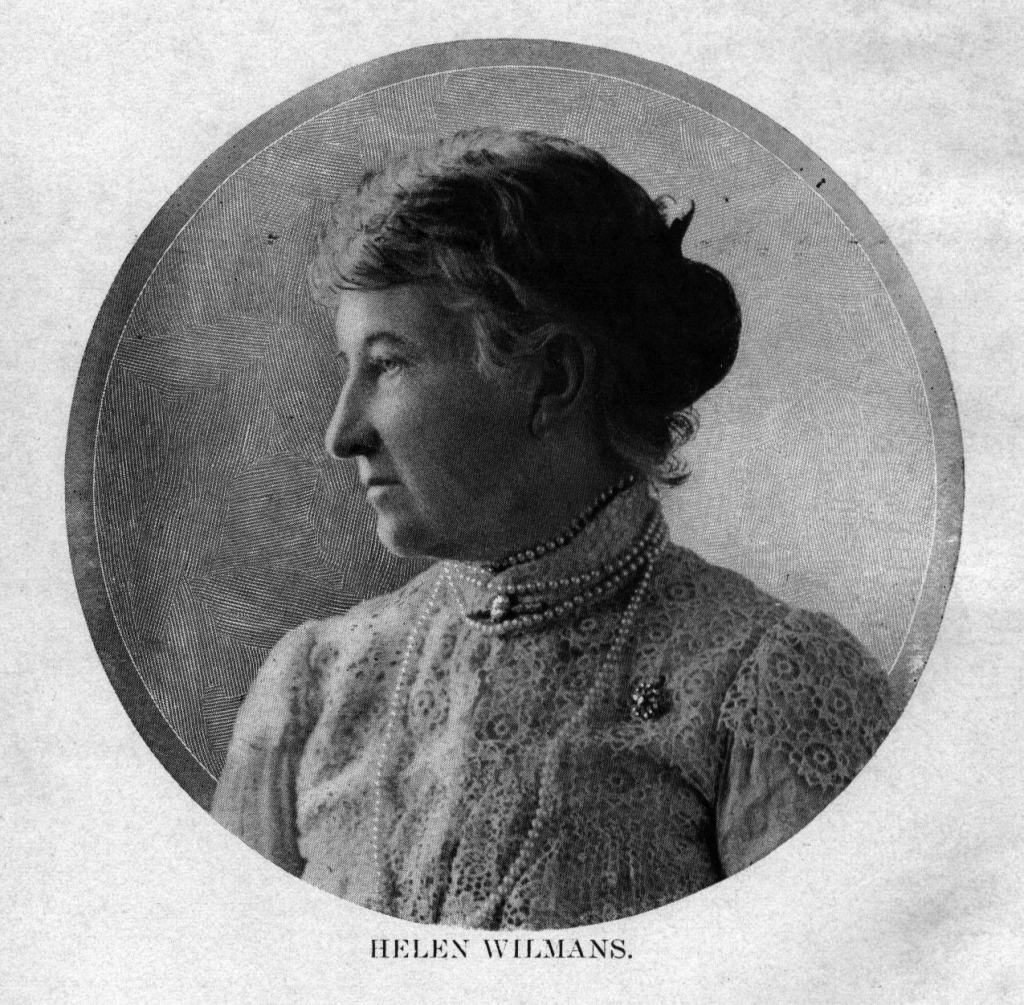
Fear Makes Us Powerless
With a few dollars in her pocket, Wilmans left an abusive marriage of 20 years to pursue her dream as a journalist. She landed a journalist job. Her ideas, though, were far ahead of her time and of the interests and understanding of her readers – so much so that she soon found herself out of a job. She describes her travails: “I stood one sleety November day out in the Chicago streets with 25 cents in my pocket and not a soul on earth from whom I felt free to ask a dollar.” (Wilmans, 1920, p.94) The crisis sparked an epiphany that would change her life. On that day she realized that she was her own master and that power emanated from the absence of fear. Wilmans describes this moment of realization:
The first attempt I made to analyze my feelings brought me the fact that I was not frightened. Then came such a consciousness of power as I never had had before in my life. Everything was swept from me and I stood alone in my own strength. And this naked strength is a tremendous thing to stand in. (Wilmans, 1920, p.94)
This awakening was the catalyst for Wilmans to write a best seller, The Conquest of Poverty, which would begin her journey to manifest a life of abundance and meaning. In her endeavors to help others to awaken to their unlimited possibilities for their lives, Wilmans was prolific. She published a weekly magazine, Freedom, and her own paper, The Woman’s World. She developed a healing ministry that thousands of people turned to for help. She taught thousands of students to actualize their dreams and heal themselves. Her aspirations were limitless and her endeavors and pursuits culminated in building an empire in a city dedicated to Mental Science – Seabreeze [now called Daytona], in Florida (see Figures 2-4). Her dream city and empire evaporated, though, after she was accused of fraudulent use of the American mail service for soliciting money for “absent treatments.” The maligning judgments made against Wilmans were ill-founded and stemmed from assumptions, rather than facts, by those prejudiced against her. Wilmans’ reliance upon the US mail was essential for her to stay in touch with patients and students. The Post Office Fraud Order that was placed upon her destroyed her reputation and her businesses. After fighting the charges for 6 years, the charges were dropped. Exhausted by the ordeal, Wilmans died impoverished and broken in 1907.
Figure 2. Rose Castle, Seabreeze, FL
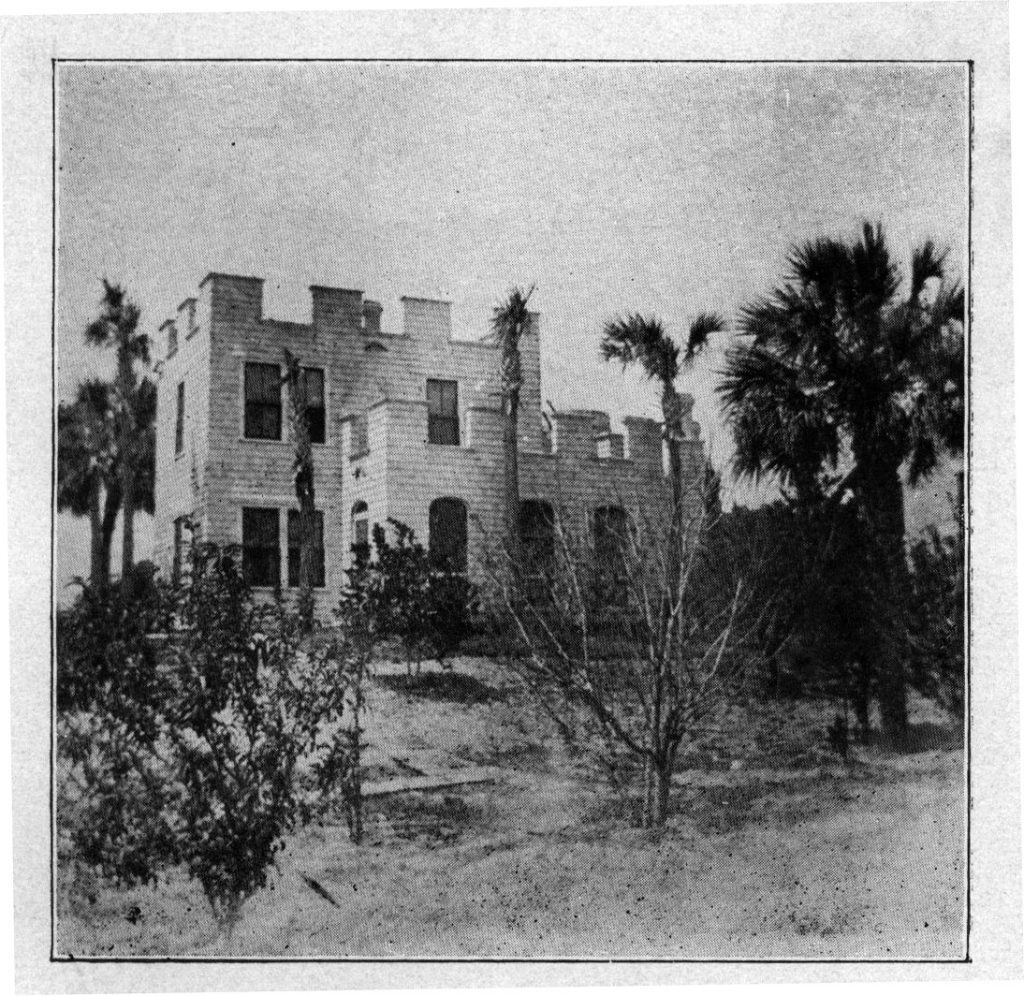
The Rose Castle and the Wilmans Opera House were focal points in Seabreeze.
Figure 3: Hotel Colonnades, Seabreeze, FL
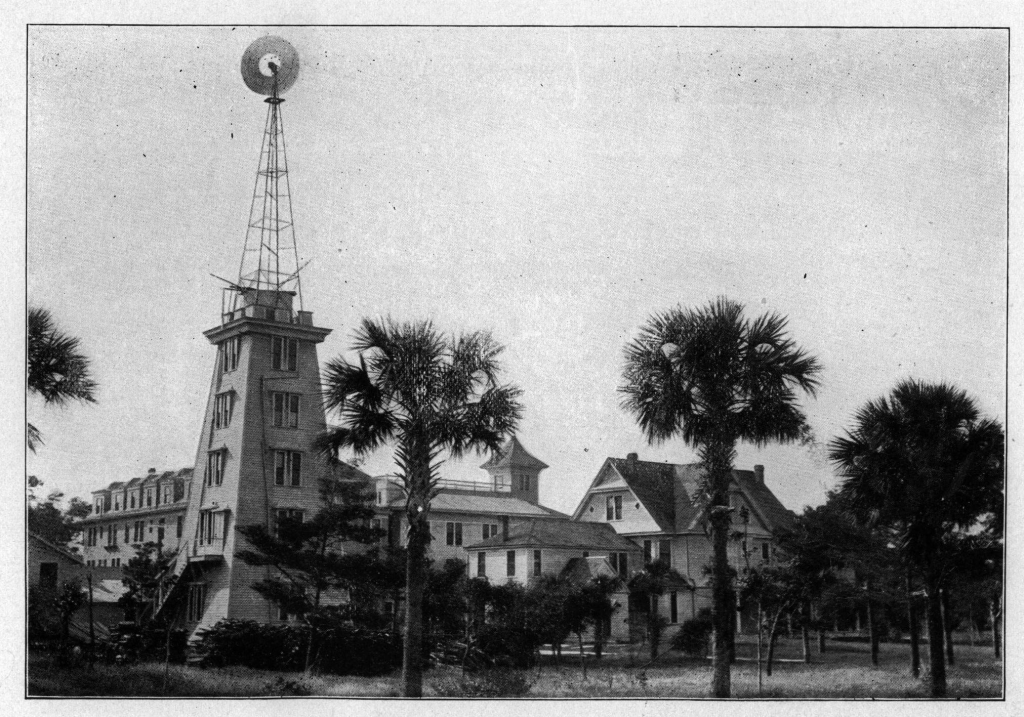
The enormous Hotel Colonnades was a central building in Seabreeze, offering housing for Wilmans’ followers.
Figure 4: Wilmans’ Home, Seabreeze, FL
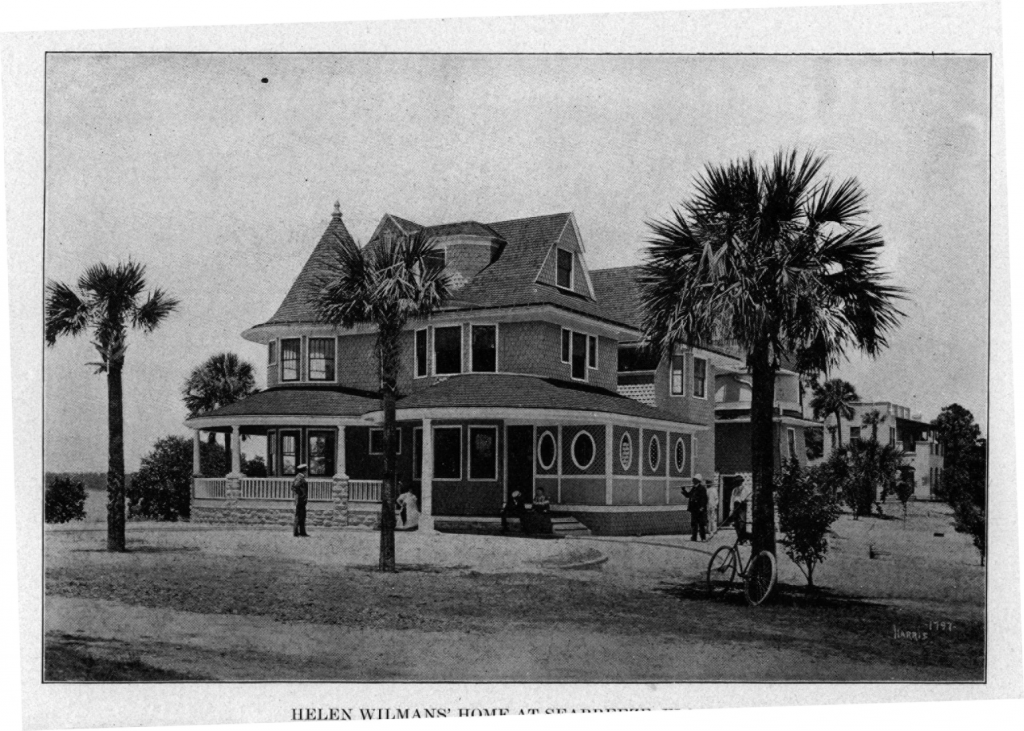
Helen Wilmans built this beautiful home in the town of Seabreeze, FL.
Thoughts Can Heal
The transmission of healing via thoughts was considered preposterous. In Wilmans’ day, the choices that people faced with conventional medicine included toxic drugs and invasive surgery; in comparison, prayer and spiritual healing were non-invasive and harmless. Today, the power of prayer is recognized by science as not only plausible but a safe, low-risk therapy for those suffering from chronic illnesses. (Rao et al, 2015, p.8) However, like today, prayer and distant-healing intentions were not condoned by the mainstream medical community in Wilmans’ day, for 2 reasons: “action at a distance is impossible because it violates one or more physical or biological laws … and the second is founded on the neuroscience based assumption that the mind is identical to the brain.” (Radin et al, 2015, p.70)
Home Course in Mental Science
Wilmans was prolific in her writing, producing a series of 20 lessons called “Home Course in Mental Science,” which Lust published between 1918 and 1921 in his own publication, Herald of Health and Naturopath. Introducing this new feature on Mental Science, Lust, as editor, expressed excitement for this new column. He was introducing a metaphysical topic in his magazine, and he recognized that there was a broad range of viewpoints. In his editorial note preceding Wilmans’ lessons, Lust states, “Some metaphysicians believe that our senses deceive us and that all matter is only a phase of mind, and that what we call matter has no existence as such.” (Lust, 1918, p.168) He continues, carefully wording his concerns: “While we are anxious to afford a free arena for the discussion of all kinds of metaphysical subjects, we do not endorse such extreme doctrines.” (Lust, 1918, p.168) Helen Wilmans’ “Home Course in Mental Science” offered to Lust’s readership a new filament of distinct knowledge whose ideas, embodied in the lessons, guided people to better their lives by choosing and continuously affirming consciousness, goodness, and health in their lives.
Helen Wilmans left behind a legacy of writing that we can turn to today and which will not seem unfamiliar. The content is as relevant today as when it was written. Wilmans had a gift for writing, and her New Age ideas were prescient, composed in the late 19th and early 20th centuries. She formulated concepts that were much ahead of her time, and her writings offer us a valuable understanding of how important the mind and spirit were in the healing of the physical body.
Another valuable point here is that Helen Wilmans wrote about God from many different perspectives. Sometimes God was an abstract construct that she deplored, and at other times she was reverent and loving of her Christian beliefs. She wrote these lessons about 120 years ago, at a time when the social order was solidly entrenched in a hierarchical patriarchy that would take many more decades to slowly unravel at its seams.
The Lessons
Lesson I was on the subject of the omnipresent life, which Wilmans defines in the following statement:
“If there is but one Life, then life is omnipresent—it fills all space. There is nothing outside of it … This life is the universal Principle of Being that men call God.” (Wilmans, 1918, p.168)
What becomes very clear when reading Wilmans’ writings is that those encountering her writing for the first time may benefit from a bit of coaching, especially given some of the unusual jargon, vocabulary, and expressions from the late 19th and early 20th centuries. Ie, her writings are filled with expressions common to the Mental Science field of the time and which require supportive definitions for the contemporary reader. For example, the term “Life Principle” is frequently seen throughout her writings. She provides the following definition: “There is a Life Principle, and it is unlimited; it is one. It holds the visible universe in place, though it is invisible. It is a self-existent principle. It is law. It is the one Law of Attraction—and beside it there is no other law.” (Wilmans, 1918, p.168) This was likely difficult enough for the reader of that era, and there is little doubt that the contemporary reader might well get lost in esoteric words. Wilmans writes from a place of absolute conviction and certainty. Those not steeped in her writings may be forgiven for giving up on her dense style, but the effort can be very rewarding if approached with patience.
Explaining the purpose of her writings on Mental Science, Wilmans writes, “The object of Mental Science, as I teach it, is to rescue man from his beliefs in his own limitations by showing him his true relations to the Universal Law; thus demonstrating to him the unlimited possibilities of his being.” (Wilmans, 1918, p.169) She promises to help her students and patients to achieve their full potential, and the lessons are delivered in a step-by-step progression.
For example, she goes to great lengths to unravel the meaning of God. She writes, “No doubt that an expanded and spiritual interpretation of the word “God” has been the foundation for the expression that God and man are one.” (Wilmans, 1918, p.169) This concept of God and Man being one was an enlightened view that not all of humanity shared. She encouraged her followers to consider the notion that human beings, especially in earlier eras, were an “infant race” that formulated their concepts of God from a perspective that rendered that God patriarchal, superior, and demanding; residing on a pedestal, in fact, “that it seemed sacrilege for [people] to aspire to be like Him [God]—not to mention the idea of being one with Him.” (Wilmans, 1918, p.169)
Words describing the spiritual and mental realms needed definitions and contextual meanings. Wilmans’ gift with words empowered the accessibility of her writings on esoteric subjects. She notes, “The first step toward the appropriation of truth is to recognize it.” (Wilmans, 1918, p.255) Recognition of a truth allows us to believe, and one of the truths that Wilmans adhered to was that “thought is the most positive, and hence the most powerful factor” (Wilmans, 1918, p.255) for people to recognize for their own personal growth.
In another lesson by Wilmans on the subject of “Thought, the Body Builder,” Wilmans continues to present her theories of Mental Science. She begins,
As we come consciously into an understanding of the omniscience of good, we will feel the presence of life; we will know that it is around us and in us and above us and below us, and we will not be afraid lest we dash our foot against a stone and fall headlong, as we continue our journey through the universe. (Wilmans, 1918, p.474)
A mistake in one’s life path, for Wilmans, was merely “a stepping stone that lifts us to higher planes of thought and life.” (Wilmans, 1918, p.372) Mistakes help us grow and point us towards more positive life conditions, she contended. These are very contemporary themes, too, echoed in the work of motivational writers and thinkers, ranging from Carnegie to Covey, and even more existential thinkers like Martin Buber.
Wilmans delves into the concept of thought determining outcomes and realities. For example,
“Thought can make sick and it can make well. Thought grounded in error, or from a negative basis, can make sick; but the same thought occupying a positive basis, and educated in the knowledge that all is good or life, can make well quite as easily.” (Wilmans, 1918, p.475) The significance of thoughts, and especially good thoughts, aids the healing process, she taught. She writes, “It is by thought that we heal.” (Wilmans, 1918, p.475)
She gives an example:
“If a man believes himself sick, I treat him for his belief. His belief is his real condition. He is sick.” (Wilmans, 1918, p.476) Believing one to be sick is essentially a negative thought, and the duty of a teacher and a healer “is to infuse the student with positive thought.” (Wilmans, 1918, p.476)
The subject of desire is also approached by Wilmans. She explains, “desire may be the breath of the divine spirit of all good in man, and not the wicked thing we have always believed it to be.” (Wilmans, 1918, p.508) The purpose of desire manifesting in our lives is essentially and simply a “demand for more and more happiness. Happiness is the right of every person.” (Wilmans, 1918, p.508) The search for happiness is proffered to explain how evil can exist in certain cultures. In her attempt to re-frame evil, she writes:
There is no sin or evil in all the universe. All is good, and good is omnipresent. All the actions and conditions the world calls evil, sinful, wicked, and judges worthy of punishment are only errors or mistakes growing out of a lack of understanding of omnipresent good. (Wilmans, 1918, p.666)
She continues,
In my denial of evil, I do not deny the existence of murder, theft, lying, selfishness, cruelty, revenge and the like; but I do deny the sense of guilt that they are deserving of punishment, or that they are sins or evils. For these offenses are only mistakes growing out of ignorance as to the best method of pursuing happiness. (Wilmans, 1918, p.666)
Errors, mistakes, and the ignorance of good were how Wilmans chose to understand and explain the presence of “evil” in our human experience.
Affirmations
Wilmans’ lessons cover many topics, including the power of beliefs and affirmations. While denials focus on the negative, affirmations, on the other hand, are positive. To move from negative beliefs to those that are positive is essential for the path of the healer. She writes,
Our beliefs in sin, sickness, poverty and death are very deeply rooted. Indeed, these beliefs are ourselves. They have built us into what we see ourselves to be. We must build ourselves anew after the pattern of truth expressed in these words―all is good, or all is Being. We must seek to incorporate the positive conditions into our bodies by denying our weaknesses and ailings and “bad luck,” etc. (Wilmans, 1919, p.400)
Wilmans believed that people had the innate power to manifest goodness in their lives. Making and saying affirmations brought into reality the qualities and the goodness into being. She often wrote about how affirmation works:
“Everything exists that can ever be desired. To recognize its existence and to know that it exists in answer to our desires, makes it ours. Therefore, we affirm that we have it. Health, then, is mine. This is one of the affirmations.” (Wilmans, 1918, p.735)
Affirmations are powerful forces, as Wilmans reinforced in her writings. Affirmations need to be believed for them to manifest. She writes, “Now, the first and principal thing toward the manifestation of good is to believe in it.” (Wilmans, 1918, p.786) The primary affirmation that Wilmans lived her life by was that “all is good; all is Life.” (Wilmans, 1918, 787) She continues, “Let this truth take hold upon you; dwell upon it constantly; work over again every problem of your life by it.” (Wilmans, 1918, p.787)
Wilmans’ purpose for writing these lessons for her patients and students was to give them guidance in self-actualizing their full potential. This familiar theme is not only indicative of her being before her time, but also testament to her scholarship and reflection about turn-of-the-century culture in North America. Today, her ideas are readily available in the scientific literature as psychoneuroimmunology unravels the theories of faith and affirmations in the disease and healing processes. The journey through her lesson sequence is rewarding. Its incremental trajectory moves the student through concepts, applications, and ongoing practice in ways that reflect the naturopathic notion that the patient should take as much responsibility as he or she can for health and wellness through life.
Each lesson builds on the previous one. The concepts and intersection of ideas accumulate and require reflection and discipline in order to assimilate the learning. When reading her eighteenth lesson, “Recognition of the Will, the Cure of Disease,” for example, be prepared for its complexity. She takes several concepts and develops how the will, thoughts, and desire enable healing within the body. Wilmans explains that the will is how people engage in life, and requires that they take action to fulfill their will. On the subject of will, Wilmans writes, “The whole tendency of the will—which is the soul of things—is to externalization … To make the will manifest in acts is all a man lives for.” (Wilmans, 1919, p.607) She continues on this point, saying, “It is the function of thought to develop the will and to establish it in personalities, thus bringing forth the real man into the activities of this busy world.” Having a strong will is essential to establishing a healthy being. She explains:
A firm mind is a firm body, for body and mind are one … The recognition of the will is the evolution of the will in the body. There is nothing in life so firm and powerful as the will. Learn to know this, that your will may become established in your body and show forth in just what you desire—health, strength, beauty, opulence, etc. (Wilmans, 1919, p.612)
The Power of Thoughts
In Lesson XIX, Wilmans extols thoughts in the most deliberate terms: “Thought is one of the finest and most powerful substances on earth—probably the most powerful substance in the universe.” (Wilmans, 1920, p.39) Expanding upon thought and will, she weaves these healing filaments together: “Thought, then, is a substance, and when charged with the will of the individual goes forth to perform the mission with which it is entrusted. It is in this way that thought heals.” (Wilmans, 1920, p.39) According to Wilmans, disease and pain were negative beliefs that must be replaced by higher thoughts. She contends, “The higher the quality of thought generated by the brain, the higher the quality of mental atmosphere will the man breathe into his body, and the more will he become refined, concentrated, purified and beautified.” (Wilmans, 1920, p.42) In this lesson, Wilmans offers instructions for her patients on how to heal using thought. One cautionary point that she concludes with is that patients undergoing treatment with her will find themselves feeling hope, but they may also feel fear. Hope and desire for health are conducive to healing, she teaches, while “fear, which points downward… leads to the grave.” (Wilmans, 1920, p.46)
In her last lesson (XX), Wilmans turns her attention to prayer. Her description of prayer is as follows: “Prayer is aspiration, or desire. When aspiration or desire becomes strong enough it ascends by virtue of its nature, or by natural law, just as cream ascends to the top of milk.” (Wilmans, 1920, p.89)
The power of prayer and distant healing are recognized as potent healing mediums evidenced by the plethora of scientific research one finds in a PubMed search. When prayer is used in healing, there is an exalted level of consciousness that constructs our belief that healing is possible. Wilmans cites self-trust in our beliefs and shows her students “that this high place of human intelligence exists.” (Wilmans, 1920, p.91)
Wilmans also encouraged her patients to share their symptoms and stories. She writes, “I permit a patient to tell me all the particulars of her disease, and I would rather she would do this than not, because it is a relief to her mind. It is virtually giving her disease away, or freeing herself from it.” (Wilmans, 1920, p.91) The power of mind cultivation in healing is repeated over and over by Helen Wilmans in her writings. “Self-trust, based upon self-knowledge, is the basis of all healing power.” (Wilmans, 1920, p.91) She points to fear as the ultimate cause of disease:
Every condition to be found in the negative pole of life is based on fear, and without fear it could not possibly exist. To cross from the negative to the positive pole of life is to pass from beliefs in disease and death to a knowledge of the fact that there is no disease nor death; and this can only be done by getting rid of fear. (Wilmans, 1920, p.95)
Wilmans was definitely ahead of her time. Her first book, The Conquest of Poverty [1899], brought Wilmans’ story to the people. In it she identified fear as the key cause of failure and unhappiness. In a subsequent book, The Conquest of Death [1902], she provides a peek into the fantastical, somewhat miraculous world of “fire walking” in Fiji, India, and Japan; the impossible feats described in her work must have intrigued her readership. Having experienced elation and surprise when walking on blazing hot coals of fire myself, I was completely engrossed reading Wilmans’ vivid accounts of fire-walking, mindful of my own adventure with the process.
In Portland, OR, recently, there were giant billboards announcing the arrival of Tony Robbins to the city. Robbins has transformed the lives of many by sharing fire-walking and the power to manifest dreams to those that flock to his performances. Helen Wilmans, in her time, was such a giant, empowering people to defy all odds and manifest the impossible. Take time to discover Helen Wilmans and her personal story (her books are still available). They will truly amaze you.
References:
Radin, D., Schlitz, M., Baur, C. (2015). Distant healing intention therapies: an overview of the scientific evidence. Global Adv Health Med, 4(suppl), 67-71.
Rao, A., Sibbritt, D., Phillips, J. L., Hickman, L. D. (2015). Prayer or spiritual healing as adjuncts to conventional care: a cross sectional analysis of prevalence and characteristics of use among women. BMJ Open, 5, 1-9.
Wilmans, H. (1918). Omnipresent life. Herald of Health and Naturopath, XXIII (2), 168-171.
Wilmans, H. (1918). Omnipresent life [continuation]. Herald of Health and Naturopath, XXIII (3), 254-258.
Wilmans, H. (1918). Thought, the body builder. Herald of Health and Naturopath, XXIII (4), 371-375.
Wilmans, H. (1918). Thought, the body builder [continuation]. Herald of Health and Naturopath, XXIII (5), 474-477.
Wilmans, H. (1918). Denials. Herald of Health and Naturopath, XXIII (7), 665-672.
Wilmans, H. (1918). Affirmation. Herald of Health and Naturopath, XXIII (8), 733-736.
Wilmans, H. (1918). Affirmation [conclusion]. Herald of Health and Naturopath, XXIII (9), 786-789.
Wilmans, H. (1919). Mental science incarnate in flesh and blood. Herald of Health and Naturopath, XXIV (8), 394-402.
Wilmans, H. (1919). Recognition of the will, the cure of disease. Herald of Health and Naturopath, XXIV (12), 605-612.
Wilmans, H. (1920). Practical healing. Herald of Health and Naturopath, XXV (1), 39-46.
Wilmans, H. (1920). Posture of the will man. Herald of Health and Naturopath, XXV (2), 89-96.
Image Copyright: <a href=’https://www.123rf.com/profile_mimagephotography’>mimagephotography / 123RF Stock Photo</a>
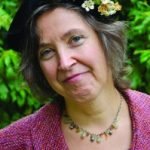 Sussanna Czeranko, ND, BBE, a graduate of CCNM, is a licensed ND in Oregon. Sussanna is a frequent presenter, nationally and internationally. As Curator of the Rare Books Collection at NUNM, she is the author of The Hevert Collection, a 12-book series about naturopathic medicine, the ninth volume of which is now complete, Mental Culture in Naturopathic Medicine. Sussanna founded The Breathing Academy, a training institute for naturopathic doctors to incorporate a scientific model of breathing therapy called Buteyko into their practice. Her next large project is to complete the development of her new medical spa in Manitou Beach, Saskatchewan – Manitou Waters Centre. She is the co-founder of the International Congress on Naturopathic Medicine and the inaugural conference chair of the Healing Skies Naturopathic Medicine Conference, in Saskatchewan.
Sussanna Czeranko, ND, BBE, a graduate of CCNM, is a licensed ND in Oregon. Sussanna is a frequent presenter, nationally and internationally. As Curator of the Rare Books Collection at NUNM, she is the author of The Hevert Collection, a 12-book series about naturopathic medicine, the ninth volume of which is now complete, Mental Culture in Naturopathic Medicine. Sussanna founded The Breathing Academy, a training institute for naturopathic doctors to incorporate a scientific model of breathing therapy called Buteyko into their practice. Her next large project is to complete the development of her new medical spa in Manitou Beach, Saskatchewan – Manitou Waters Centre. She is the co-founder of the International Congress on Naturopathic Medicine and the inaugural conference chair of the Healing Skies Naturopathic Medicine Conference, in Saskatchewan.





